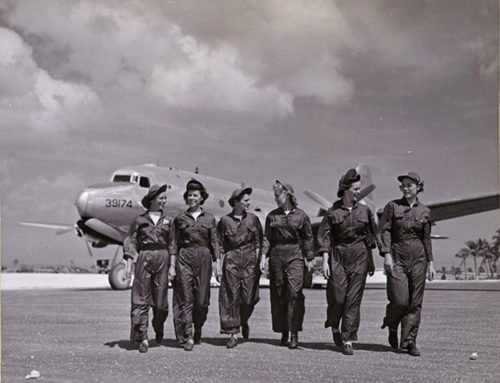Radar-picket submarines served only briefly in the U.S. Navy, but their story is a good one, as described by Edward C. Whitman, Senior Editor of Undersea Warfare magazine, in a Winter/Spring 2002-edition article entitled “Cold War Curiosities: U.S. Radar Picket Submarines.” Today’s installment is part one of two.
“As a direct consequence of the Navy’s growing need for long-range air defense in the final phases of World War II, U.S. submarines gained an improbable new mission as early-warning radar pickets that expanded dramatically during the early Cold War. The resulting series of distinctive submarine classes eventually culminated in the largest nuclear-powered submarine the United States had ever built. And then inside of a year or two, they were all gone. It’s an interesting story.
“In the closing months of the Pacific war, Japan’s desperate use of kamikaze aircraft—suicide planes—in its last-ditch defense of the home islands inflicted serious damage on the gathering Allied fleet. In attempting to counter this new threat during the invasion of Okinawa in April 1945, the U.S. Navy deployed lines of destroyers as ‘radar pickets’ across the threat axis at some distance from their task group centers. Although these distant ships provided timely early warning of Japanese air attacks and significantly reduced the toll taken of major combatants, they themselves proved exceptionally vulnerable to kamikaze tactics, and twelve were sunk.
“Since the anticipated invasion of Japan itself—scheduled for November 1945—was expected to attract an even more intense kamikaze onslaught, the Navy high command sought to use submarines as less vulnerable radar pickets and in July 1945 ordered that 24 boats be prepared for that role by installing an approximation of a typical destroyer’s radar and air-control capabilities. Since preliminary tests indicated that the standard submarine radar could not detect air targets above 10,000 feet or beyond 27,000 yards, and because there would need to be a combat information center (CIC) and appropriate communications onboard for controlling interceptors, the necessary full-blown conversions would have stretched into 1946, too late for their intended role in the invasion of Japan. As an interim measure, COMSUBPAC modified the SV air-search radars on USS Grouper (SS-214) and USS Finback (SS-230) for periscope mounting and operation at shallow submergence, and similar conversions of four other boats—including rudimentary CICs—had already begun when the Japanese surrendered in August 1945.
“Even though the end of World War II eliminated the urgent need for radar picket submarines, two of the more ambitious conversions planned earlier were continued on the USS Tench (SS-417)-class fleet submarines, USS Requin (SS-481) and USS Spinax (SS-489) and completed in the fall of 1946. Although not yet classified as radar pickets (‘SSRs’), both submarines mounted high-powered SR-2 search radars and SV-2 height finders directly on their afterdecks, with the radar electronics and CICs just below in the after torpedo rooms. Although a stern launching capability was still retained, the tubes had to be loaded externally. To accommodate the additional electronics, each boat received an extra motor-generator and more air-conditioning, and to provide a reference point for the combat air patrol (CAP) they controlled, homing beacons were deck-mounted on both. Despite having to discontinue radar operations whenever they submerged, Requin and Spinax were basically successful in their new roles, and they were certainly more survivable than a corresponding destroyer. However, the low deck-mounting of their antennas severely limited radar performance and attracted reliability problems from both breaking seas and salt-water intrusion into the waveguides. Below deck, having to crowd so much high-powered electronics into all available nooks and crannies brought its own share of maintenance headaches.
“Thus, it was quite appropriate for the Navy’s Bureau of Ships to name their follow-on design program for radar picket submarines Project MIGRAINE. In 1948 and 1949, making use of the lessons learned from Requin and Spinax, two more fleet submarines, the Tench-class USS Tigrone (SS-419) and the USS Balao (SS-285)-class USS Burrfish (SS-312), were given so-called ‘MIGRAINE I’ conversions—and redesignated as SSRs. In this modification, the space formerly used as the crew’s mess and galley was turned into a CIC, and the after torpedo tubes were removed to allow the entire after torpedo compartment to be used for berthing. Two of the forward tubes were also eliminated to make additional room for storage and equipment. More importantly, however, the two radar antennas were raised on masts, with an AN/BPS-2 search radar sprouting from the after portion of the sail, and the height finder mounted on a free-standing tower just abaft it. This put the 15-foot search antenna some 40 feet above the water, with the height finder only a little below.
“At approximately the same time, Requin and Spinax were returned to the yard for upgrading of their earlier systems to a MIGRAINE II configuration that put the search radar up on a sail-mounted mast—as in MIGRAINE I—but left the height finder in its less satisfactory position down aft. Again, the after torpedo compartments were stripped of their tubes and used for both CIC space and crew berthing. Both the MIGRAINE I and MIGRAINE II boats were also fitted with AN/BPQ-2 guidance equipment for mid-course control of Regulus cruise missiles.
“By this time, the Cold War with the Soviet Union was in full swing, and air defense of U.S. carrier battle groups on potential strike missions near the Russian landmass generated a requirement for even more submarine radar pickets. Eventually, six more World War II submarines, all Manitowoc-built USS Gato (SS-212)-class boats, were chosen for the more drastic MIGRAINE III SSR conversion. Because experience had shown that even the newer SSR configurations were seriously cramped, the final MIGRAINE design called for cutting the boats in two and inserting a 24-foot plug to get additional room for an expanded CIC and electronic spaces forward of the main control room. Even so, the MIGRAINE IIIs also had to sacrifice their after torpedo tubes for more berthing space, but they were fitted with a larger, streamlined sail, with the BPS-2 search radar mounted aft of the periscopes and other masts. An AN/BPS-3 height-finder radar on a pedestal just behind the sail and an AN/URN-3 TACAN beacon on the afterdeck completed the installation. The six MIGRAINE III boats USSs Pompon (SSR-267), Rasher (SSR-269), Raton (SSR-270), Ray (SSR-271), Redfin (SSR-272), and Rock (SSR-274) were all converted at the Philadelphia Navy Yard between 1951 and 1953 giving the Navy a total of ten radar picket submarines to face the growing Soviet threat just as the Korean War was drawing to a close.”





